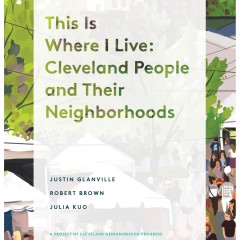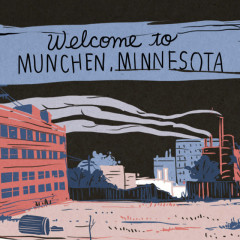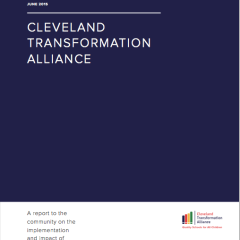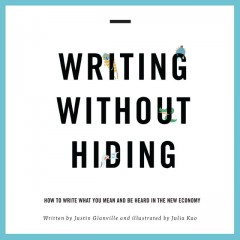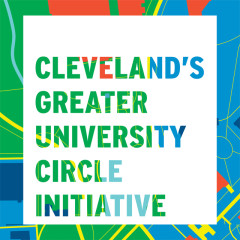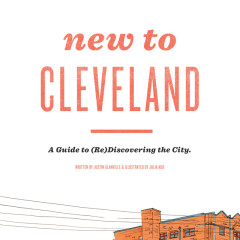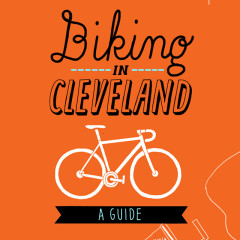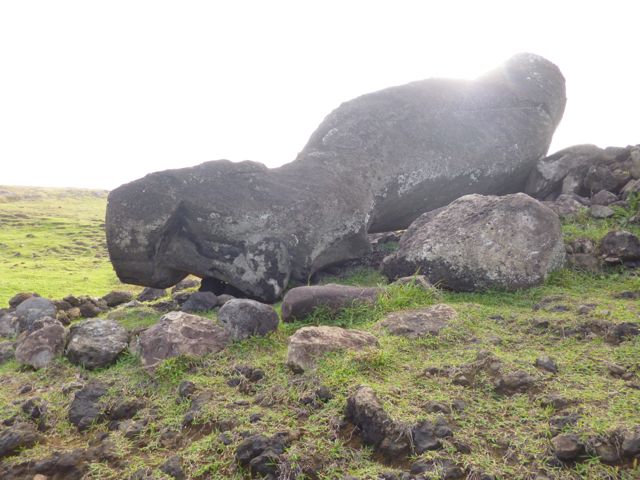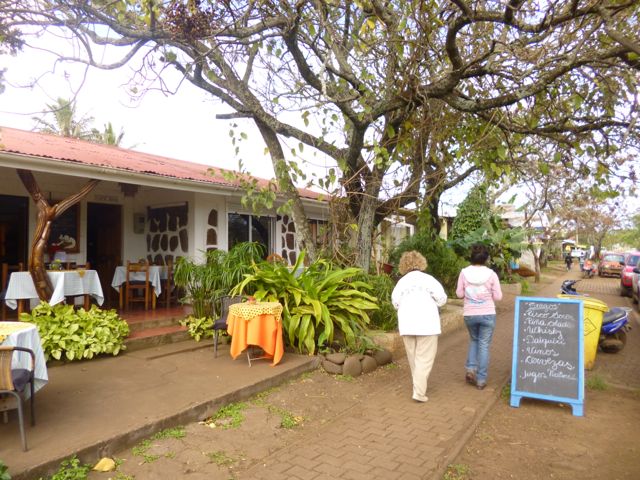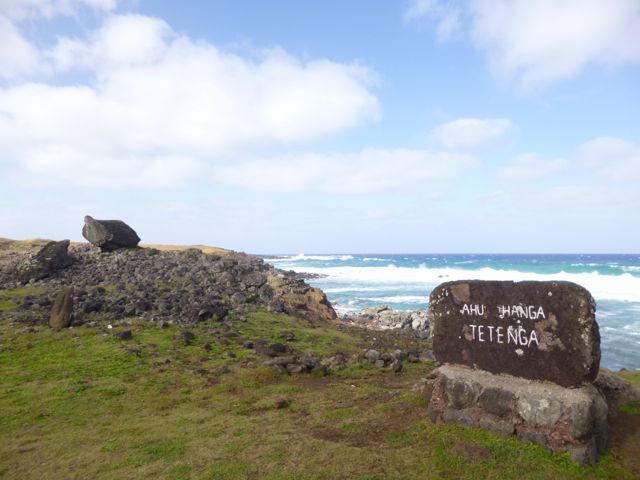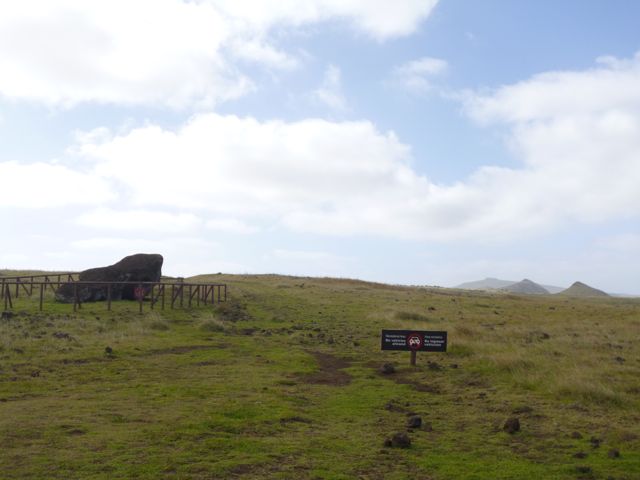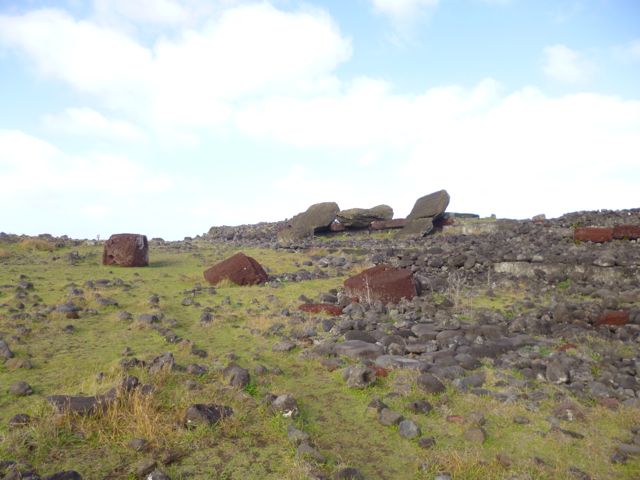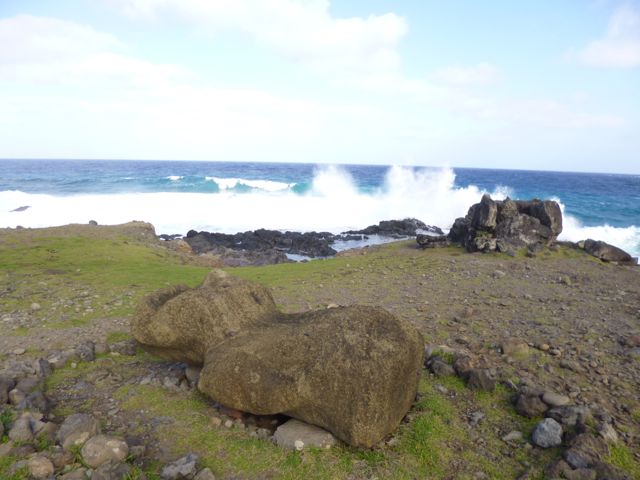Some mornings caffeine just hits me in a certain way, and I get all excited about something. This morning, it was the idea of writing an article, when I get back home, about the balance the island is trying to strike between tourism and conservation. Something like 65,000 tourists came here last year, up from a few thousand a year 20 years ago. Meanwhile, more and more Chileans are moving to the island — they now outnumber Rapanui people by most accounts.
It seemed the island faced an essential conflict: Its growing population rely almost entirely on tourism for income. At the same time, on-island resources are extremely limited, able to support only a limited number of people — as had been proven, spectacularly, in Easter Island’s past. How did you manage this conflict?
I fired off a few emails, including one to the author of a guidebook I’ve found incredibly helpful. It’s called A Companion to Easter Island, by James Grant-Peterkin, a British guy who’s lived here since 1996. Much of the archaeological information in these posts comes from his book. I wanted to know if he could meet with me.
And then I thought… What if I tried to interview the mayor? I’d heard from a contact back in Cleveland who’s been to Easter Island that the mayor is super-accessible here. First I went to the tourist office and hit a bureaucratic brick wall, so then I went to city hall. In an airy, open-windowed l lobby, I encountered a very tall, very beautiful, and very kind receptionist. I told her I was a journalist and what I wanted to write about. Immediately, she replied, with a smile: Quiere hablar con el alcalde? (Do you want to talk to the mayor?) Uh — yes!
I waited for about 30 minutes, catching up on some writing. I was told the mayor, Pedro Pablo Edmunds Paoa, was in some sort of event in the next room. Through a window, I could see fancy food on platters set up on a large table. ABBA played on the radio, a double-header: “Lay All Your Love on Me” and then “Dancing Queen.”
At one point, the receptionist asked if I could come back another day. No, I said; I was leaving the next morning, a Saturday. I was happy to wait. I knew that if I met him in person, even for a few minutes, I had a better chance of being able to follow up with him in the future if I needed to: He’d be more likely to remember me.
Finally, a man stepped into the lobby with no fanfare or entourage. He wore a yellow windbreaker and his hair was cut neatly around his ears. At first, I wasn’t sure if this was Mr. Paoa or some other local luminary who’d been in the meeting. But with a small smile and a wave of his hand, he ushered me into his office.
He apologized (Disculpe) that he didn’t have much time because he was going to another meeting. I said that was OK, I understood, and asked if he was comfortable speaking in English. He said Spanish was better, and I gulped and asked in my best intermediate Espanol about what he thought about keeping a balance between tourism and conservation on the island. He never did speak a word in English, but I can understand Rapanui Spanish much better than Chilean Spanish — perhaps because it’s not the native language (a Polynesian dialect called Rapanui is).
“This is a huge topic,” he said, “and I only have a few minutes.”
“Sure — I understand. Maybe you could just tell me about one or two things you’re trying.”
A guarded look flashed across his face — one I was used to from my years of interviewing public officials at AP. He told me about a new plan the island was adopting, called Isla de Pascua con Amor (Easter Island with Love), a 20-year vision for the island’s future. (Just like in the U.S.: Ask about a hard issue and you get talk about a plan!) Each letter of “amor” stood for a separate initiative in the plan: A for autosustenable (self-sustaining), M for mejoras (improvements), O for optimizando recursos (optimizing resources) and R for responsibilidad (responsibility) to balance social equity with economic development.
I asked if the plan was online — he said he didn’t think so.
“What about tourism? Do you think it needs to be limited, to preserve the archaeological sites and natural resources?”
“Absolutely not. We can’t limit tourism (no puedo limitar) — the island is free (libre). Tourism doesn’t have any harmful impact.”
I didn’t get much farther before I had to go, and I wish now I’d managed to ask about immigration from Chile. But I have a feeling I would have gotten a similarly diplomatic and evasive answer about that.
I got what I needed, anyway: The mayor, at least in public, would be unlikely to express any reservations about immigration or tourism. To do so would be impolitic.
I thanked him and left, and he apologized again for his lack of time. He gave me his business card and said I could contact him later. He seemed to have warmed toward me a little since the start of our short interview, maybe because I’d been less than hard-hitting in my questions.
As I walked out of his office, I thought about what he’d said. Isla de Pascua con Amor — that said it all. It was cutesy, non-serious, like an lite-soul album title from the 1970s. It said a ton about how many people, especially those currently in power, see the island: As a kind of Chilean version of Hawaii, a place to enjoy a nice beach vacation while maybe happening to check out a few ruins.
This clashed completely with what I’d read about the growing independence movement on the island: Native Rapanui have been lobbying the Chilean government to give islanders more freedom to govern their own affairs, including limiting tourism and immigration. The struggle of the Rapanui to control their own affairs continues, nearly 300 years after the first Europeans caught sight of the place. I’m going to keep thinking about all this after I’m back home. To write anything substantive, I’ll have to interview a lot more people. But it’s a really compelling topic.
In the afternoon, I rented a bike again and headed to the south coast road to see the sites I’d missed when Graciela and Francisco gave me a ride back from Rano Raraku. I’d read in Grant-Peterkin’s book about a short walk you can do from Ahu Tentenga that takes you along the old road the islanders used to transport the moai to the coast.
I found the path, which starts at a colossal abandoned moai on the left side of the road (above). As I walked along the barely-defined path, I saw a few other huge moai that had fallen before they reached their destinations, left where they broke because a destroyed moai was tapu (taboo).
I walked through tall grass as far as a tiny, red-dirt volcano, where lay yet another abandoned moai. The landscape here was truly empty, especially in the late afternoon, when the tour buses have finished this part of their circuit and there’s virtually no traffic on the road, only the sound of the wind, waves and crickets to remind me I was still on earth.
I turned around and met up with a young German woman who was also biking back to town. She’d been to Tongariki and Rano Raruku, and her feet were moving laboriously. “Everything hurts,” she moaned. I knew what she meant. My own thighs and behind were pretty sore from the pedaling and walking I’d been doing over the past couple days.
I left her to visit Akahanga, one of the best-preserved town sites on the island. It’s also one of the most impressive ahu I’ve visited, though the moai are unrestored, still lying face down where they were pushed hundreds of years ago, against a roiling bay.
This particular moai fell in such a way that you can see clearly his mournful face:
A small, older moai behind the platform lies a few hundred yards from the platform. Apparently, someone had dragged it here in an effort to ship it off the island in the early 20th century but gave up the effort.
The last site I passed on my way back to town was Vaihu, another unrestored moai site. I never thought I’d say it, but by the time I got there I was suffering from fallen-moai burnout. Seeing one after another of these ruined places had taken its toll on my psyche: the waste, the disappointment. It was fascinating in a way, but to use storytelling terms, I felt I was hitting the same emotional “beat” over and over. I think that’s part of why I’ve been reaching out to more people, including the mayor, over the past few days: to reemerge into the present from all the time I’ve been spending in the distant past. I pedaled on.
I returned to Hanga Roa just before sunset, sea spray dried on my glasses lenses. I stopped by my cabana, said hello to Dario, dropped off my backpack. Again, we made plans for cooking fish that I knew probably wouldn’t happen, and set out for my last sunset at Tahai. It was restored, and there would be people there. A different beat.
I thought about Dario as I rode the few minutes to Tahai. He was only 50, he’d told me, but he looked at least 10 years older. He was a certain type of man. Isolated, living in near-poverty conditions, in deteriorating health, associating with either no one or a ragtag group of new friends who knew nothing about their pasts, slowly self-destructing. There’ve been a few of these men in my own family. What motivates them? Something traumatic in their past? In a way, I empathize: I have the impulse myself often, to isolate. Like I was in now, really. But then once I’m in a solitary situation, I begin to crave company. I have the impulse for isolation but not the endurance, and I think I’m grateful for that.
It was a crowded night at Tahai, and the chilliest yet. In front of me, what looked like a mother and son were trading turns at a camera they’d set up on a tripod. The son would pose, then the mother. Each time, they’d look at the preview screen to see how the photo had turned out, then take another.
I lay with my head on a rock and watched, snapping a few photos myself. It was my last night, after all. A German woman, older, sat nearby. She, too, mostly watched, refraining from taking pictures. I felt calm here, like I could relax. At a certain point I let out a contented sigh and the German woman looked back at me and smiled.



